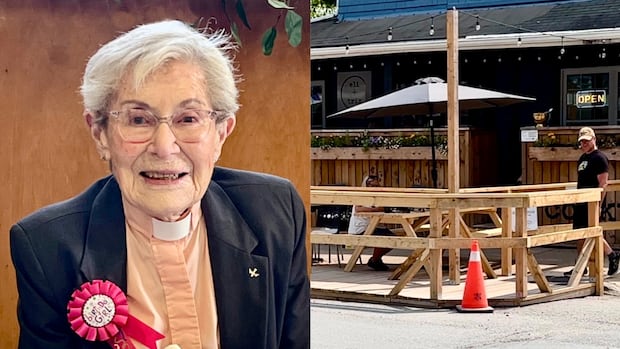The high school program helped train some of the volunteers who fought giant NS fires

Some volunteer firefighters responding to the largest wildfire on record in Nova Scotia have gone through a program that gives students a high school credit upon completion of their education.
The initiative offers high school students who have completed firefighter training the opportunity to apply for a personal development credit before graduation.
The municipality of Barrington, where the fire started on May 27, has been providing the training since 2019 and sees the possibility of a credit as a bonus for students who want to graduate. Since then, as many as nine volunteers have joined the volunteer fire department in the area.
It is another strategy the municipality has tapped into to find new volunteers.
“It’s a challenge to get people in,” said Dwayne Hunt, the council’s fire department coordinator. “It is very important, because especially in rural areas, the municipalities cannot possibly afford to have a paid fire brigade.”
The 113 firefighters from the three departments in the municipality are all volunteers.
Recruitment strategy
The Canadian Association of Fire Chiefs estimates that 71 percent of all firefighters in the country are volunteer firefighters.
But some chiefs have expressed concern that tough economic times are making recruiting efforts increasingly difficult.
Hunt, who had been a volunteer firefighter for 35 years, researched the personal development credit program after a local fire department brought up the idea.
“It’s another toolbox tool to help with recruiting,” he said. “It consists of classroom and practical skills.”
The opportunity is available to every high school student in the province, according to the Department of Education. It said students are working with volunteer fire departments to meet requirements.
The three-month program that Hunt teaches is conducted from the region’s three fire halls between September and November to avoid the area’s busy lobster season.
A number of volunteer firefighters make their living on the water, he said, or by working in the factories.
The students who complete the degree can apply for one elective credit for the five they need to graduate.
“Over the years, we had many members join at the age of 16 who were still in high school and it was a way of acknowledging the time they put into their community,” he said.
While he can’t guarantee the chance of a high school credit, this is why new people have been applying in recent years, but the number of students taking the course is encouraging, he said.
“Between the three fire departments, we have 113 firefighters. So eight or nine of those is pretty good, the percentage. Especially new young people.”

Some of those new hires have already proved invaluable in fighting the massive fire at Barrington Lake in Shelburne County, said Jody Goreham, the chief of Woods Harbour-Shag Harbor Volunteer Fire Department.
“It gets them in,” Goreham said. “If you don’t have firefighters, you can’t fight fires.”
Hunt said he’s heard from other fire departments in Nova Scotia and shares how things worked in Barrington.



